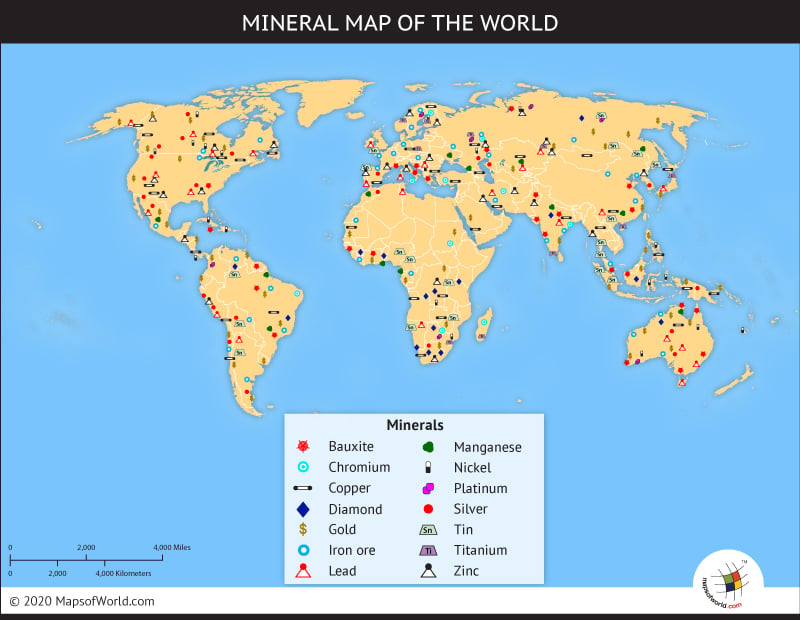World Mineral Map
"A mineral is a naturally occurring inorganic element or compound having an orderly internal structure and characteristic chemical composition, crystal form, and physical properties - USGS." Minerals are found all over the world in the form of deposits. Some common minerals are copper, gold, lead and nickel.

| Description : The map depicts the location of mineral deposits around the world, including bauxite, chromium, copper, diamond, gold, iron ore, lead, manganese, nickel, platinum, silver, tin, titanium, and zinc. | Disclaimer |

